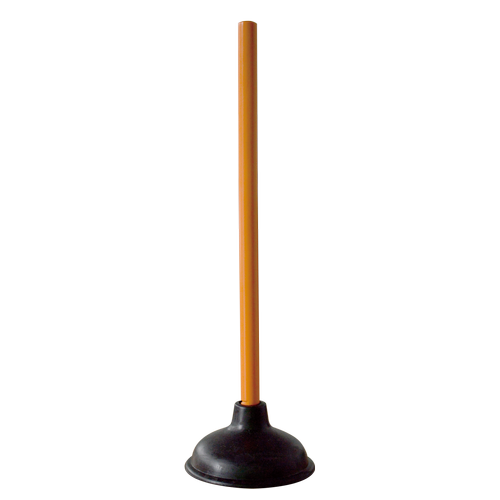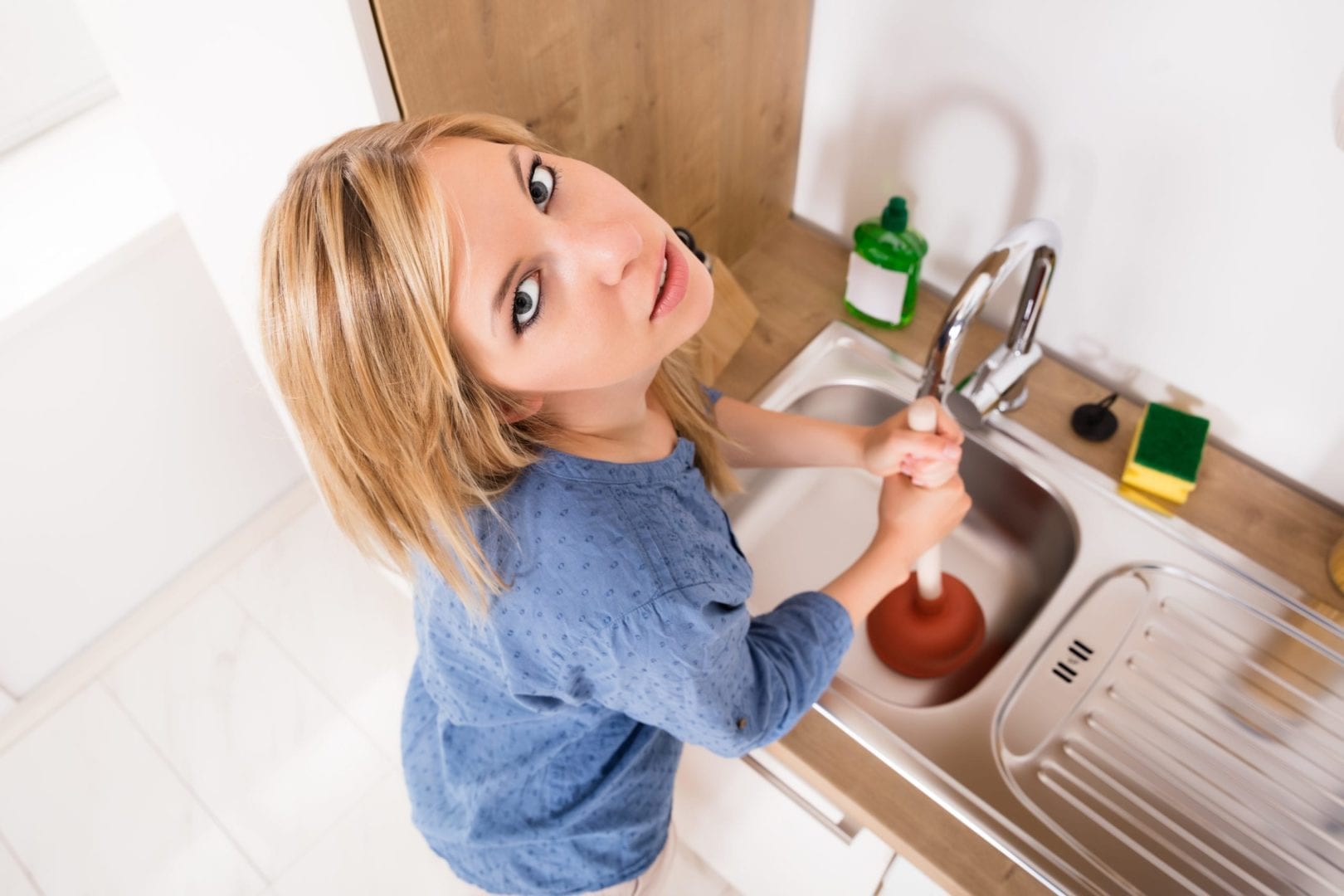Are you interested in selective information on Tips on How to Effectively Use a Plunger?

Introduction
Correct maintenance of household drains pipes is important for stopping obstructions and guaranteeing smooth water flow. One of the secret tools in every home owner's toolkit is the bettor, along with different drainpipe cleansers made to deal with stubborn clogs efficiently. This post checks out just how to utilize plungers and drain cleansers successfully to keep your drains flowing freely.
Area 1: Understanding Bettors
Types of Plungers
There are numerous types of plungers available, each created for various sorts of drains pipes and clogs. The most common types consist of mug plungers, flange bettors, and accordion bettors.
Just How Plungers Job
Plungers work on the concept of creating pressure and suction to remove blockages. When correctly used over a drain, they produce a vacuum that can pull out particles or break up obstructions.
Choosing the Right Bettor
Picking the right bettor depends on the type of drain and the nature of the clog. Mug plungers are excellent for sinks and tubs, while flange plungers are better suited for toilets due to their layout.
Typical Blunders with Plungers
Staying clear of these mistakes guarantees efficient plunging: incorrect seal around the drainpipe, inadequate force, and not clearing surrounding debris.
Section 2: Utilizing Plungers Effectively
Preparation
Prior to diving, guarantee the bettor covers the drainpipe totally and creates a tight seal. Clear any kind of noticeable particles around the drain opening.
Technique
Beginning with gentle diving activities to build suction. Increase pressure slowly, utilizing a steady rhythm. Repeat as needed up until the drain removes.
Repairing Tips
If diving doesn't work, try adjusting the seal, using oil jelly for a better seal, or utilizing a different sort of plunger.
Section 3: Understanding Drainpipe Cleansers
Sorts Of Drain Cleaners
Drain cleansers can be chemical or enzymatic. Chemical cleaners use strong chemicals to liquify blockages, while chemical cleansers utilize all-natural enzymes to break down raw material.
Exactly How Drain Cleansers Work
Chemical cleaners respond with clogs to dissolve them, while chemical cleaners break down natural products like hair and grease without harming pipelines.
Safety and security Considerations
Constantly use gloves and eye protection when using chemical drainpipe cleaners. Guarantee appropriate air flow and comply with supplier instructions carefully.
Eco-Friendly Alternatives
Think about making use of vinegar and baking soft drink or enzyme-based cleaners for green alternatives that are much safer for pipelines and the setting.
Section 4: Utilizing Drainpipe Cleansers Effectively
Application Methods
Pour chemical cleaners straight into the drain opening. Permit them to help the suggested time prior to purging with warm water. Chemical cleansers need to rest overnight.
Preventative measures
Stay clear of blending various kinds of cleaners, as this can generate poisonous fumes. Never utilize chemical cleansers in conjunction with a bettor, as spilling can occur.
Dealing With Persistent Clogs
For relentless obstructions, take into consideration using a plumbing snake or calling a professional plumber to prevent damage to pipes.
Conclusion
In conclusion, comprehending how to make use of plungers and drainpipe cleaners successfully is necessary for preserving healthy pipes systems. By choosing the right tools and techniques, property owners can deal with small obstructions and prevent major plumbing concerns down the line.
How To Properly Use A Plumbing Snake To Clear Drains
When any drain clogs in our home arise, we tend to gravitate toward the plunger and little else. In cases where the plunger and its vacuum-created pressure are not able to clear clogs, many immediately move to harmful chemicals or simply call their plumber to fix the issue.
we’re happy to help with all drain cleaning needs and concerns. This includes informing you on a few other home remedies you may have at your disposal for minor to moderate clogs, one of which is the use of a plumbing snake. Many people have never used one of these before – let’s go over the steps to take when your drain clogs and you have a plumbing snake available.
Attempt Plunger Use
The first step here, as we noted above, should indeed be to grab your plunger when you notice a drain clog and attempt to resolve it this way. If you’re unsure how to use a particular type of plunger, our plumbers can answer any questions you have. If this doesn’t do the trick, however, you move on to the snake.
Locate And Prepare Snake
A plumbing snake is a metal or plastic device that’s generally about a quarter of an inch thick. It’s design with significant extensions, meant to reach down into your clogged drain and push the clog out. Snakes also contain drain augers that will latch onto and push stubborn blockages.
If your plunger doesn’t clear a clog, locate your snake and bring it to the drain in question. We also recommend keeping a bucket nearby to collect the clog once you pull it out, plus we’d advise wearing goggles and possibly protective gloves.
Feed Snake
Once you’re ready to go, feed the snake slowly down the drain, using the crank device it comes with to keep it moving until it finds the clog. Once this happens, much of the clog will be latched onto the coil so you can pull it out, while the rest will simply break up and flow downward.
Detach Debris
Remove the snake slowly from the drain, and once you’ve done so, pick off any debris that’s stuck to the coil. This is another area where wearing gloves is a must.
Flush Drain
Finally, take a few minutes to ensure the snake has done its job correctly. If you’ve been using it on a toilet, flush the toilet a couple times and make sure everything flows well. If you’ve used it on a different drain, flush it with some room temperature water.
https://www.mybuddytheplumber.com/blog/how-to-properly-use-a-plumbing-snake-to-clear-drains/

Application Methods
Pour chemical cleaners straight into the drain opening. Permit them to help the suggested time prior to purging with warm water. Chemical cleansers need to rest overnight.
Preventative measures
Stay clear of blending various kinds of cleaners, as this can generate poisonous fumes. Never utilize chemical cleansers in conjunction with a bettor, as spilling can occur.
Dealing With Persistent Clogs
For relentless obstructions, take into consideration using a plumbing snake or calling a professional plumber to prevent damage to pipes.
Conclusion
In conclusion, comprehending how to make use of plungers and drainpipe cleaners successfully is necessary for preserving healthy pipes systems. By choosing the right tools and techniques, property owners can deal with small obstructions and prevent major plumbing concerns down the line.
How To Properly Use A Plumbing Snake To Clear Drains
When any drain clogs in our home arise, we tend to gravitate toward the plunger and little else. In cases where the plunger and its vacuum-created pressure are not able to clear clogs, many immediately move to harmful chemicals or simply call their plumber to fix the issue.
we’re happy to help with all drain cleaning needs and concerns. This includes informing you on a few other home remedies you may have at your disposal for minor to moderate clogs, one of which is the use of a plumbing snake. Many people have never used one of these before – let’s go over the steps to take when your drain clogs and you have a plumbing snake available.
Attempt Plunger Use
The first step here, as we noted above, should indeed be to grab your plunger when you notice a drain clog and attempt to resolve it this way. If you’re unsure how to use a particular type of plunger, our plumbers can answer any questions you have. If this doesn’t do the trick, however, you move on to the snake.
Locate And Prepare Snake
A plumbing snake is a metal or plastic device that’s generally about a quarter of an inch thick. It’s design with significant extensions, meant to reach down into your clogged drain and push the clog out. Snakes also contain drain augers that will latch onto and push stubborn blockages.
If your plunger doesn’t clear a clog, locate your snake and bring it to the drain in question. We also recommend keeping a bucket nearby to collect the clog once you pull it out, plus we’d advise wearing goggles and possibly protective gloves.
Feed Snake
Once you’re ready to go, feed the snake slowly down the drain, using the crank device it comes with to keep it moving until it finds the clog. Once this happens, much of the clog will be latched onto the coil so you can pull it out, while the rest will simply break up and flow downward.
Detach Debris
Remove the snake slowly from the drain, and once you’ve done so, pick off any debris that’s stuck to the coil. This is another area where wearing gloves is a must.
Flush Drain
Finally, take a few minutes to ensure the snake has done its job correctly. If you’ve been using it on a toilet, flush the toilet a couple times and make sure everything flows well. If you’ve used it on a different drain, flush it with some room temperature water.
https://www.mybuddytheplumber.com/blog/how-to-properly-use-a-plumbing-snake-to-clear-drains/

I ran across that page about Here's How to Correctly Use a Toilet Plunger when doing a lookup on the internet. Are you aware of somebody who is interested by the topic? Why not share it. Thanks a bunch for your time. Please check up our blog back soon.
Click Here